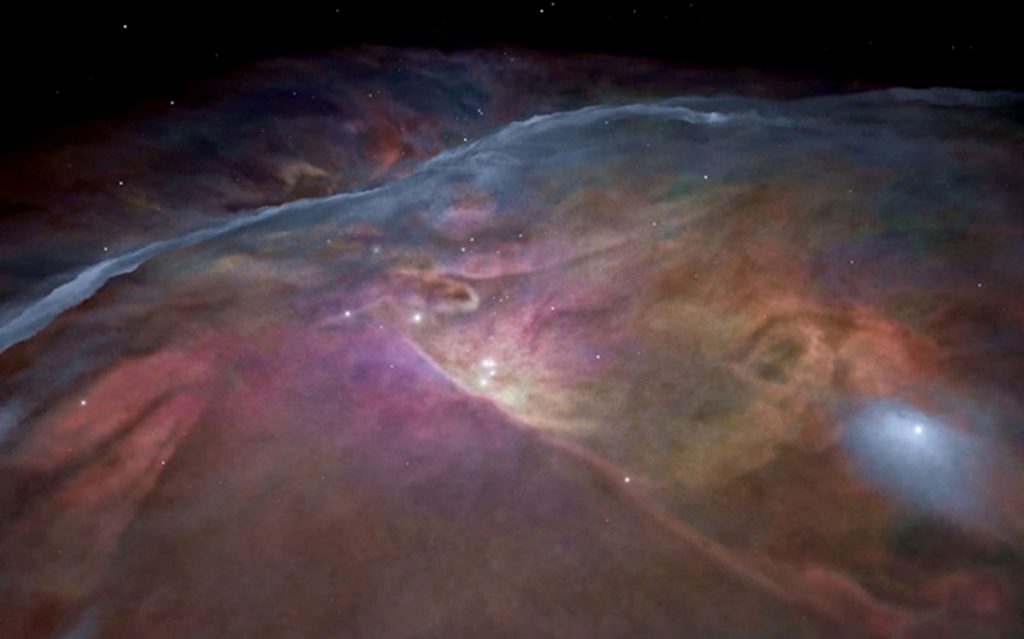The Orion Nebula, a famous star-forming region in the constellation Orion, appears to be leaking gas and dust from a tear in its gaseous shell discovered by NASA’s flying telescope SOFIA.
This expanding shell, known as Orion’s Veil, originates in the winds that blow from a massive group of stars within the nebula called the Trapezium Cluster. The winds stir dust and gas, creating a bubble around the nebula that is expanding toward Earth, according to a statement (opens in new tab) from the Universities Space Research Association (USRA).
Using the airborne Stratospheric Observatory for Infrared Astronomy (SOFIA) — a joint project between NASA and the German Aerospace Center (DLR) — researchers found a protrusion jutting out into space from the veil’s northwestern region. The protrusion given an impression as if the shell has been pierced, allowing gas and dust to escape.
Related: Spectacular Photos of Nebulas in Deep Space
“The bubble — with a diameter of approximately seven light-years — should be an almost sphere-like structure, but we found a protrusion in its northwestern part,” Ümit Kavak, lead author of the study and part of the SOFIA team based at NASA’s Ames Research Center in California’s Silicon Valley, said in the statement. “When you breach the Veil shell, you effectively start stirring a cosmic soup of gas and dust by adding turbulence.”
SOFIA’s German-built REceiver for Astronomy at Terahertz Frequencies (GREAT) instrument revealed ionized carbon emissions flowing from the protrusion, which the researchers used to measure the size, structure and expansion of Orion’s Veil shell. This data will provide new insight into the origin of Orion’s Veil and its fate, the researchers said.
“This isn’t the most appetizing soup, but it’s one of the ways to form new stars or limit future star formation,” Alexander Tielens, co-author of the study from Leiden University, said in the statement.
The outflows of ionized carbon leaking out into space affects the density, temperature and chemistry of its surrounding region. This, in turn, may lead to the creation or destruction of new stars in the Orion Nebula.
Their findings were published April 22 (opens in new tab) in the journal Astronomy & Astrophysics.
Follow Samantha Mathewson @Sam_Ashley13. Follow us on Twitter @Spacedotcom and on Facebook.

